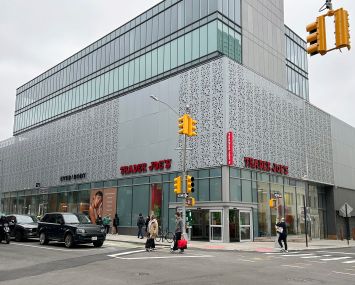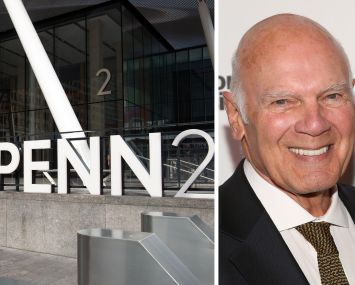
Last Friday, I was given the opportunity to testify before the Rent Guidelines Board regarding the current state of the multifamily market. The RGB is the entity that establishes the legal rent increases for rent-regulated apartments in New York. My testimony focused on some fundamental problems within the system and the need for guidelines increases that will compensate owners sufficiently enough to deal with escalating operating expenses.
My testimony appears below:
GOOD MORNING AND thank you for the opportunity to address you today. My name is Robert Knakal, and I am the chairman and founding partner of Massey Knakal Realty Services. Massey Knakal is a building sales brokerage company which has four offices and 150 employees covering the New York metro area. The company was founded in 1988 and, to date, has sold over 4,000 investment properties having an aggregate market value in excess of $12 billion. I have personally brokered the sale of nearly 1,100 properties having a market value in excess of $6 billion. The majority of these sales have involved rent-regulated apartment buildings.
In this role, I have been exposed to a wide array of apartment building owners and investors and my recent interactions with these people have made me worry about where the multifamily market is headed. My concerns stem from my love of this city and what I believe is in the best interest of New York.
Within the multifamily market, recent events have caused an unprecedented level of uncertainty unlike anything I have seen in the 26-plus years I have been brokering in New York. Any economist will tell you that the thing markets dislike the most is uncertainty, and, in New York’s housing market, uncertainty abounds.
Rules and reliable metrics create certainty, stability and confidence from participants in the market. Importantly, this confidence translates into massive amounts of private-sector investment made to enhance the quality of our housing stock. Without a doubt, confidence has been shaken by recent events.
The recent Roberts decision in the Stuyvesant Town-Peter Cooper Village case, which ruled that units could not come out of regulation if the building is receiving J-51 tax benefits, overturned 13 years of standard operating procedure within the industry. Participants in the marketplace rely on the Department of Housing and Community Renewal to enforce the rules, and their opinion letters provide the blueprints for operating decisions in what is a very complex system. The Roberts decision has brought into question the validity of a DHCR opinion letter. Essentially, the players in the game are now uncertain that the referee knows the rules of the game. If the referee does not understand the rules, how can the players feel comfortable?
Moreover, the Department of Housing Preservation and Development, another authoritative agency, ratified DHCR’s suggested procedures. HPD, the agency responsible for overseeing the J-51 program, would, as a matter of course, reduce the tax benefit by the percentage of units removed from regulation. The Roberts decision brought into question the validity of positions taken by yet another highly relied-upon agency.
In another unsettling legal decision, the court ruled that the low-rent supplement implemented by you, the Rent Guidelines Board, was beyond your jurisdiction.
These events have left the industry wondering what the real rules are and who or what agencies can actually be relied upon for determining the parameters within which participants must operate. These conditions have created circumstances under which the flow of capital targeted at upgrading our housing stock has been negatively impacted.
Something that can help restore some of the lost confidence in the market, and subsequently the quality of our housing stock, is for proper rent guideline increases to be determined by the RGB.
For many years, the increases have been inadequate to cover ever-increasing operating costs. When I started in the business, in 1984, a typical multifamily, rent-regulated property had operating expenses that averaged about 20 percent to 25 percent of revenue. Today, this ratio can be 60 percent to 70 percent or higher. It should be noted that these ratios do not include any debt service calculation. With even conservative leverage, most regulated properties do not have much, if any, cash flow. Some properties do not have enough revenue to cover operating expenses even with no mortgage at all. The main reason that we have observed deterioration in fundamentals is that regulated rent increases have simply been inadequate relative to expense increases.
For instance, the total of one-year RGB increases going back to 1984 aggregate to 97 percent. If we compound these increases, the increase grows to 149 percent. Real estate taxes, on the other hand, have grown at a multiple of this. A study of hundreds of regulated apartment buildings conducted by Massey Knakal revealed impactful results. In 1984, real estate taxes averaged about $1 per square foot. Walk-up buildings averaged about 96 cents, and in elevator buildings, taxes average about $1.04. Today, real estate taxes range from $6 to $13. This results in tax increases of 600 percent to 1,300 percent.
Other expenses have also outpaced rent growth by a wide margin as well. This year’s PICO, at 3.4 percent, is clearly misleading and inadequate. While gas prices have gone down slightly, most multifamily buildings are heated using # 4 or # 6 oil. Last year, # 4 heating oil could be purchased for $1.31 per gallon. Today’s price is $2.20, a 68 percent increase. Water and sewer charges have seen double-digit increases for many years running, with a 12.9 percent increase last year.
Also extraordinarily important to consider is the fact that the basket of expenses upon which the PICO is based has not been updated since 1984. Since then, there have been hundreds of requirements and obligations placed on multifamily property owners, all of which have associated costs, whether they are administrative or actual. Every year, more and more conditions are added to the labyrinth of rules that make up our rent regulation system. Dealing with asbestos, lead paint, window guards and the myriad of other issues owners must comply with present an economic burden not considered in the PICO.
Additionally, the PICO does not consider that buildings are now 26 years older than they were in 1984. Today, 80 percent of New York’s multifamily properties are at least 60 years old. These properties require constant repair, and the price index does not take into consideration that services need to be provided more frequently as buildings age. If a plumber was projected to visit a building 1.2 times per month in 1984, is it unreasonable to think 1.7 visits per month may be more appropriate today? The PICO does not take this dynamic into consideration.
Without adequate rent increases, at some point, [due to] the disparity between the large growth rate of costs relative to the low growth in regulated rents, operating expenses will exceed total revenue, creating a disincentive for the private sector to deploy capital into these buildings, resulting in a complete breakdown of our housing market.
There are three negative ramifications of rent-regulated buildings reaching this inevitable inflection point.
First, the quality of our housing stock will deteriorate and deteriorate rapidly. There will simply be no incentive for private capital to be invested in the form of major capital improvements, individual apartment improvements or equity investments.
Second, the tax base of our city will be negatively impacted. Today, real-estate-related tax revenue represents approximately 50 percent of all tax revenue collections. These funds are desperately needed to provide essential services to our residents and businesses.
Third, and most importantly, the stock of rental units in the city will be greatly reduced. This is particularly true of units in elevator properties, where payroll expenses are significantly greater than in walk-ups due to union contracts which continue to escalate payroll costs in good times or bad. The operating expense burden will become so great that owners will be left with no choice other than to convert rental properties to co-operative or condominium ownership, simply to pass along this onerous expense burden to the occupant of the apartment.
If participants in the market know that rent increases are enough to cover marginal increases in operating costs, it would restore some of the lost confidence in the market and buffer some of the uncertainty which has such a deleterious impact on our housing stock.
I urge you to consider the highest possible guideline increase at this time. A low increase would not create the “affordability” the tenant advocates clamor for, as our system of rent regulation is not an affordable housing program at all. We have no idea of the means of tenants who receive this form of public assistance. I know this is outside of your jurisdiction, but as long as our housing stock is allocated by inertia rather than economic ability, we should only be considering the quality and quantity of the housing stock and providing the incentives to attract private-sector capital, without which the system is unsustainable.
The message you would send to the market with an appropriately high guideline increase is that you care about the quality of the housing stock in our city, and maintaining the quantity of rental units in New York. The private sector would certainly feel more comfortable about continuing to invest massive amounts of capital in the increasingly uncertain rent-regulated housing market if this were the case.
Thank you for your time today.
Robert Knakal is the chairman and founding partner of Massey Knakal Realty Services and has brokered the sale of more than 1,050 properties in his career.


